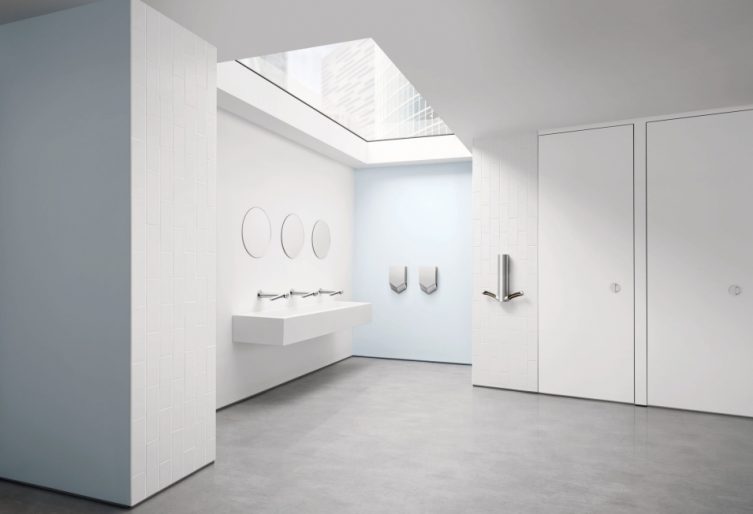In the wake of the pandemic, focus on health and hygiene has never been so prevalent. Taking a proactive approach to the hygiene of health and care facilities can help to alleviate more strain on those facilities and their owners and manager, as well as better support the health and safety of patients, visitors, and staff.
Technology can play an important role, with materials and mechanisms like filtration helping to improve hygiene in public spaces.
Shared washrooms are an important place to start when considering how to improve hygiene within health and care facilities. Our 2021 global hand hygiene survey found that 65 per cent of respondents were more concerned about visiting public washrooms than they were the previous year, highlighting empty paper towel dispensers among their top five frustrations along with a lack of toilet paper, unclean toilets, no soap, and blocked toilets.
The survey also found that 24 per cent of Canadians were worried about drying their hands with dirty air from dryers.[1] This is where HEPA filters can be beneficial, purifying the air used to dry hands. This filtration technology can catch 99.97 per cent of particles as small as 0.3 microns, including bacteria and viruses.[2]
Canadians surveyed said that if a washroom did not have any working hand dryers or paper towels, 32 per cent would let their hands dry naturally while 19 per cent would wipe them on their clothes. Both options present risks of undoing the work of cleaning their hands in the first place. Considering damp hands can transfer up to 1,000 times more bacteria than dry hands,[3] health and care facilities must ensure they are providing hygienic drying solutions so that patients, visitors, and staff do not need to find alternative ways to dry their hands.
With the right technology and a regular cleaning schedule, health and care facilities can alleviate many of these concerns, ensuring their washrooms are more hygienic and ready for visitors.
Overall, Canadians are more aware of the cleanliness of shared washrooms year over year, and 57 per cent said last year they were more concerned about visiting a public washroom compared to 2020.[4]
Part of this shift in expectations also includes sustainability, with 75 per cent of respondents concerned about the environmental impact of single-use disposable products, including paper towels. Therefore, we are likely to see more facilities moving away from these types of products and embracing technology to provide hygienic, sustainable solutions. Shifting to more sustainable alternatives like hand dryers with HEPA filters can both improve the hygiene of the facility and significantly reduce waste.
The question of whether to stock washrooms with paper towels or hand dryers became more fraught with the onset of the pandemic, as people began to pay close attention to aerosols and became concerned with the hygiene of hand dryer air. However, independent testing conducted by Airmid Healthgroup showed that hand dryers such as Dyson Airblade are proven to aerosolize no more than paper towels.[5] Moreover, paper towels are expensive, have a high impact on the environment, and cause extra washroom maintenance through mess and blockages. They can also create hygiene issues beyond the washroom because dispensers are often found empty, leaving people to dry their hands on their clothes or walk away with damp hands – something we’ve learned is not conducive to preventing the spread of pathogens.
Armed with the right information and data, health and care facilities can make informed choices about how to keep their patients, staff, and visitors safe. Technology, such as high-speed hand dryers that hygienically dry hands with HEPA-filtered air, has a role to play in ensuring better hygiene, especially when it comes to washrooms.
As we emerge from the pandemic, we need to work together to continue to prioritize hygiene and protect our most vulnerable in as many ways as we can.
Anthony Hall is a Lead Design Engineer at Dyson.
[1] Based on a global survey conducted in July 21 across 20 countries worldwide with 15,100 respondents in total. In Canada, 500 respondents participated.
[2] HEPA filter tested to IEST-RP-CC001.6, by an independent testing laboratory under prescribed conditions.
[3] Patrick D, Findon G, and Miller T (1997). Residual moisture determines the level of touch-contact-associated bacterial transfer following hand washing. Epidemiol. Infect. 119: 319-325
[4] Based on the July 21 survey.
[5] Based on aerosolization measured during hand drying. Testing conducted by independent third-party lab.








